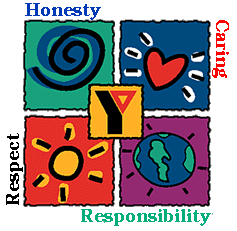


Indian Princesses Black Swamp Nation
The purpose of the program is to create meaningful
memories with our daughters, while having fun and making friends. Along
the way, we seek to increase awareness and respect for Native American Cultures.
![]()
The Indian Princess Slogan: "Friends Always"
![]()
Symbolism of the Indian Princess Headband

The Indian Princess Headband design displays significant symbols of Indian Princess principles and purpose. The central theme of the headband is the symbol of the eye of the Great Spirit. The crossed arrows to the left of the central symbol symbolizes friendship. The circled heart to the right of the central symbol, is the symbol for love. The fathers and daughters are symbolized next to the symbols for love and friendship which is interpreted to mean that fathers and daughters, under the eye of the Great Spirit, are seeking loving and friendly service to each other. To the left are three teepees which is the symbol for community. The line that joins this symbol with the symbol for father and daughter, indicates the happy work of father and daughter in the community. To the right is a single teepee, symbolizing home. Again, a line joins this symbol with the symbol for father and daughter, indicating happy work at home. To the far right and left are symbols for day, night, forest, mountain, field, lake and stream These symbols tend to enrich the central theme, giving a broader scope to the work of the father and daughter by centering their efforts in village and community life, and, as the ritual says, "In forest, field, and stream."
The meaning of the headband has been interpreted in the words of the Indian Princess Pledge:
"We, Father and Daughter, through friendly service to each other, to our family, to this tribe, to our community, seek a world pleasing to the eye of the Great Spirit".
![]()
Aims of the Indian Princess Program:
To be clean in body and pure in heart.
To be friends always with my father/daughter.
To love the shared circle of my family.
To listen while others speak.
To love my neighbor as myself.
To seek an preserve the beauty of the Great Spirit's work in forest, field and stream.
![]()
History
The YMCA Program was developed to support the parent's vital family role as teacher, counselor and friend to their children. The program was initiated by Harold S. Keltner (St. Louis YMCA Director in 1926 as an integral part of Association work. He organized the first Indian Guide tribe in Richmond Heights, Missouri, with the help of his good friend, Joe Friday, an Ojibway Indian, and William H. Hefelfinger, chief of the first Y-Indian Guide Tribe.
Inspired by his experience with Joe Friday, who was his guide on fishing and hunting trips into Canada. Harold Keltner initiated a program of parent-child experiences that now involves over a million children and adults annually at the YMCA. While Keltner was on a fishing trip in Canada, one evening, Joe Friday said to his white colleague as the relaxed around a camp fire:
"The Indian Father raises his son. He teaches him to hunt, to track, to fish, to walk softly and silently in the forest, to know the meaning and purpose of life and all he must know..."
Joe Friday spoke before groups of YMCA boys and dads in St. Louis, and Mr. Keltner discovered that fathers, as well as boys, had a keen interest in the traditions of the American Indian. At the same time, being greatly influenced by the work of Ernest Thompson Seton, a great lover of the outdoors, Harold Keltner conceived the idea of the father-son program based upon the strong qualities of the American Indian culture: life, dignity, patience, endurance, spirituality, feeling for the earth and concern for the family. Thus, the Y-Indian Guide program was born over 74 years ago.
The rise of the YMCA, following WWII, the genuine need for supporting little girls in their personal growth, and the success demonstrated by the father-son program helped to nurture the development of the Y-Indian Princess program in the Fresno YMCA of California in 1954.